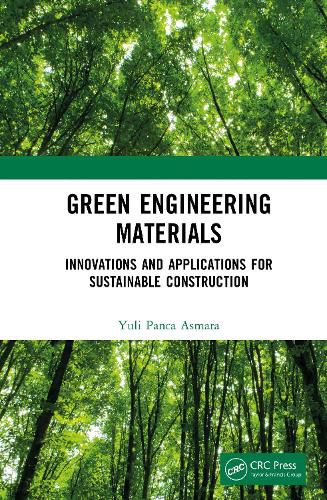Readings Newsletter
Become a Readings Member to make your shopping experience even easier.
Sign in or sign up for free!
You’re not far away from qualifying for FREE standard shipping within Australia
You’ve qualified for FREE standard shipping within Australia
The cart is loading…






The use of green engineering materials represents a promising approach in sustainable development. This book explores various renewable materials and their properties, applications, and technological advancements driving their use in modern engineering and construction.
This guide highlights the significance of green engineering materials in sustainable development and explains their effective use in engineering and construction. It covers bamboo as a rapidly renewable material with significant engineering potential, detailing its unique characteristics, preservation methods, and uses in construction. The book also investigates sustainable plant-based composites, focusing on biopolymer and biomass matrices, cellulose-based materials, lignin, polylactic acid, and natural rubber. It highlights the benefits of plant fibers like rice husk ash and jute while addressing the challenges in adopting these composites in engineering. Green concrete technologies like hybrid geopolymers and green additives and their manufacturing processes are also discussed. Following this, the book discusses bio-based adhesives and then explores the industrial potential of rice husk ash in applications including electronic devices, composites, and reinforced concrete. Palm oil and coconut shell are also examined as versatile renewable resources for various construction and development applications. Finally, the book emphasizes the importance of wood in construction, including its properties, treatment methods, and future trends in sustainable construction practices.
Because this has a broad scope and provides readers with a basic level of technical knowledge, it is an ideal guide for general readers concerned with sustainability as well as anyone starting out in the field, including undergraduate students and readers in industry who want to keep abreast of current developments and trends in this field.
$9.00 standard shipping within Australia
FREE standard shipping within Australia for orders over $100.00
Express & International shipping calculated at checkout
The use of green engineering materials represents a promising approach in sustainable development. This book explores various renewable materials and their properties, applications, and technological advancements driving their use in modern engineering and construction.
This guide highlights the significance of green engineering materials in sustainable development and explains their effective use in engineering and construction. It covers bamboo as a rapidly renewable material with significant engineering potential, detailing its unique characteristics, preservation methods, and uses in construction. The book also investigates sustainable plant-based composites, focusing on biopolymer and biomass matrices, cellulose-based materials, lignin, polylactic acid, and natural rubber. It highlights the benefits of plant fibers like rice husk ash and jute while addressing the challenges in adopting these composites in engineering. Green concrete technologies like hybrid geopolymers and green additives and their manufacturing processes are also discussed. Following this, the book discusses bio-based adhesives and then explores the industrial potential of rice husk ash in applications including electronic devices, composites, and reinforced concrete. Palm oil and coconut shell are also examined as versatile renewable resources for various construction and development applications. Finally, the book emphasizes the importance of wood in construction, including its properties, treatment methods, and future trends in sustainable construction practices.
Because this has a broad scope and provides readers with a basic level of technical knowledge, it is an ideal guide for general readers concerned with sustainability as well as anyone starting out in the field, including undergraduate students and readers in industry who want to keep abreast of current developments and trends in this field.